Fender vs Squier Stratocaster: differences and features

Fender is the largest guitar manufacturer in the world, and the Stratocaster is the best-selling guitar model in history, Squier is its budget brand, what characteristics and differences they have: Fender vs Squier.
Duel, Fender Stratocaster or Squier Stratocaster
We all ever wonder, Fender or Squier? Historically, the Fender was an expensive American guitar and the Squier its cheap Asian version. However, the Squier or Fender question is no longer so much a question. The cheaper Fender Stratocaster expansion such as the Japan or the Mexico ones, allow us to access guitars of great value for money. On the other hand, Squier has been taking increasingly better ranges, reaching the point of manufacturing guitars with the same woods as Fender and Alnico 5 pickups instead of ceramic, as are some models of the Classic Vibe series. So, already maybe the question of Fender or Squier, now it should be why not “Fender and Squier”.
Fender and Squier guitars
Electric guitar giant Fender manufactures countless instruments from really inexpensive models like Modern Player Made in China, to expensive Custom Shop guitars made in the USA, in addition to its production from Japan and Mexico.
On the Squier side, the offering has expanded beyond the Stratocaster and Telecaster, largely replicating the “real” Fender lineup and beyond. Thus, it presents very cheap and basic versions like the Squier starter pack. Also, it has more quality and sophisticated models such as the Squier Classic Vibe -which includes Stratocaster, Telecaster and more-, which even have characteristics very similar to the Fender guitars. A great range of musical instruments ideal for any beginning guitarist or bassist.
Here we will take a look at the true differences between the Fender Stratocaster and Squier Stratocaster that really exist, and what don’t. We will tear down all the “hidden” myths and secrets. Although the analysis is about the great Stratocaster model, they can be extended to anyone, because in the end, it is an analysis of general qualities.

Also, you may be interested in this note on the best stratocaster according to its year of manufacture.
Expansion of Squier models and ranges
Although historically the Squier product portfolio has consisted primarily of lower-end versions of entry-level Fender models such as the Stratocaster and Telecaster, their offerings have diversified in recent years to include a wide variety of unique models, even including some that just they were available at the Fender Custom Shop.
Fender and Squier guitars
It is simple to analyze the differences between the two guitars roughly. The Squier uses alternative woods, except for the necks, which are also maple. Its finishes are of lower quality and it has very low quality hardware and -almost always- generic ceramic pickups. The finishes are with a thick layer of paint, which affects the resonance and tone of the instrument, in addition to having imperfections.
Fenders, on the other hand, use the traditional tonewoods, maple and alder. The finishes are neater and finer, they have better components, the pickups are of good quality most are of Alnico.
The price differences are usually 4 to 1, meaning that the Fender prices are usually four times more than the Squier ones. At first glance, there wouldn’t be much to discuss. But as we said above, Squier has greatly improved its quality on top-of-the-range guitars such as the Classic Series, Vintage Modified, Deluxe or Standard. The Squier Classic Vibe, in particular, is a great guitar that is very close to the real Fender. So let’s compare Squier’s top of the line to Fender’s bottom line. Thus, we will analyze the Stratocaster of the Fender Player Series line from Mexico -MIM- and the Squier Classic Vibe line made in China.
The goal of this comparison between Fender and Squier Strat guitars is a general exploration of the main differences for those who are considering buying one or the other.
Fender and Squier Stratocaster prices
As expected, the price varies considerably for both brands, although over the years it has been markedly reduced. The new Squier Stratocaster Classic Vibe cost around EUR 370/380 in Europe and USD 400 in the United States. On the side of the Fender Stratocaster Player Series MIM, the are priced around EUR 630/650 in Europe and USD 700 in the United States.
Although the difference is high, if you are not closed to the new options, and you consider the market for used guitars, you can get Fender Mexico guitars in good condition at prices similar to the Squier ones, and that is where you ask yourself, Used Fender Mexico or new Squier Classic Vibe? A great dilemma that we will help you solve!
For this reason, we always recommend considering second-hand options when trying to find the best value for any guitar model, be it Fender or Squier, Gibson or Epiphone or any other guitar.

Variety of Squier offer
Previously the core of the Squier line primarily featured Stratocasters and Telecasters, as well as Precision and Jazz Bass. But Fender has done a great job with Squier and has expanded the line enormously. Thus, it has included models such as Jazzmaster, Jaguar, Mustang, Toronado, Starcaster, Super-Sonic, Telecaster Thinline, and even exclusive and Signature models such as J Mascis, John 5 and others. It has also incorporated Bass VI, baritone guitars, Stratocaster and Telecaster style from the 50’s, 60’s, 70’s into its offering. On the side of the electric basses they have done the same, Squier is offering almost every bass Fender has ever made.
Squier has done the same with its finishes. It has also expanded the color options it offers such as burgundy mist in the Classic Vibe, Fiesta Red, Lake Placid Blue, among others.
Fender Mexico Player Series
Fender’s cheapest standard line is the Mexico Player Series, which replaced the well-known Standard Series. Although, Fender also make some particular models in the countries where the Squier are built: Indonesia, China and Korea. To simplify our analysis, the comparison is between the classic Stratocaster models, that’s why we took the Player Series Made in Mexico.
There is the standard S-S-S version -three singlecoils-, and there are H-H -Humbuckers-, H-S-S and Plustop versions with flamed maple top that come with S-S-S and H-S-S.
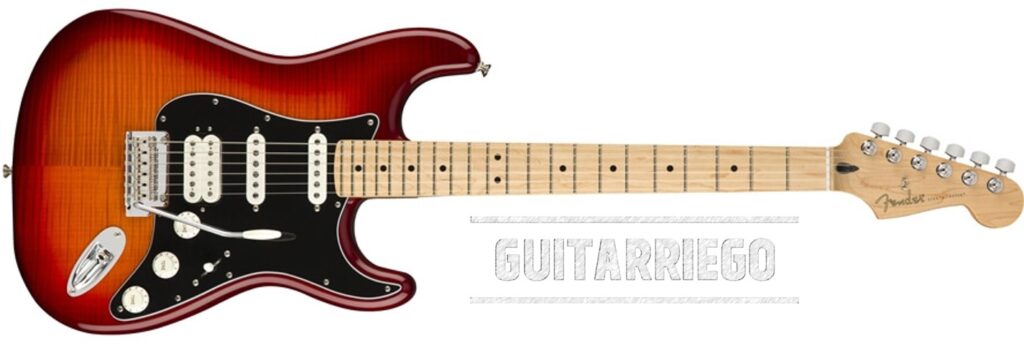
Tonewoods used by Fender and Squier
Maple neck
It’s not news that both Fender and Squier use maple for their necks. Which is a great thing, since the most influential tonewood in the tone of a musical instrument is precisely the neck. This makes the tonal differences between the “true” and its “alternative” less than what happens with Gibson and Epiphone. Of course, a quality difference is to be expected between the woods used by one brand and another.
Fingerboard: Maple, Pao Ferro and Indian Laurel
When we talk about one-piece maple necks, clearly, the differences between both brands are still limited to the quality of the wood and not to the species or tonewood.
However, when we talk about fingerboards made of other wood, neither of them has Indian Rosewood anymore. Now, the Fender Stratocaster Player Series from Mexico has Pao Ferro, while the Squier Stratocaster Classic Vibe comes with Indian Laural. Although the tonal difference between the maple fingerboard and those of Pao Ferro or Indian Laurel is remarkable, only very deep ears will detect the differences between Laurel and Pao Ferro. Even the same happens between Pau Ferro and Rosewood, the differences are difficult to hear, although there is a consensus that Pao Ferro has a little more attack and brightness than rosewood, which is more medium and warm. So here, the difference is not very important.
Fender and Squier body tonewood
As you may already know, Fender has used many different Tonewoods for their bodies, but without a doubt the most used are the Alder and the Ash. With very different tonal characteristics, the alder is a wood rich in mids frequencies, ideal for playing with drive, while the ash has a “scooped” freq curve, giving a lot of dynamics and clarity to the tone, ideal for clean audios or for metal guitarrists looking for clear and defined sound, playing with high gain.
On the side of the Squier, the first stratocaster guitars made in Japan in the 80’s were recognized for being built with solid basswood, which gave them an excellent quality. However, later in the early 90’s, they were replaced by laminated bodies of the same wood, which meant a significant drop in quality.
However, in recent years, Squier has been releasing models with great quality, approaching again -and more than ever- the basic quality of the “real” one, that is to say, the Fender. Among these models are the Classic Vibe, which are the top of the range, which has included models with Alder, thus offering the same tonewoods as Fender: alder and ash. There is also CV with other body tonewoods -the last ones released-, as happens with the Deluxe and Vintage Modified lines, which although a notch below the CV, are guitars of an excellent quality.

Squier Tonewoods: Alder, Ash, Basswood, Agathis, Pine, Poplar, Nato and more
Most of Squier’s instruments are made from basswood, agathis, poplar, nato, pine, and other inexpensive woods. Although you can find specific, special and limited editions with the “correct” or traditional tonewoods: Alder and Ash.
Basswood
Probably the most commonly used tonewood, especially for Squier’s tall lines, is Basswood. This tonewood has received a bad review from many guitarists. However, it must be demystified and clarified that although there are many detractors of basswood, the reality is that it is a more prejudiced than objective position. Good quality basswood is an excellent wood with tonal characteristics very similar to Alder, the tonewood most traditionally used by Fender.
The confusion with basswood comes because there are also other species of wood which are incorrectly called “basswood”. These woods are much cheaper and of lower quality, and used in low-end guitars. These same people who pay attention to this overlook that Basswood is used for high-end guitars from Ibanez and other Superstrat manufacturers, as well as being a one of the preferred Tonewoods from boutique manufacturers such as Anderson and Suhr. Fender has even used these Tonewoods with their Japan-built guitars.
That said, it should also be clarified that aesthetically it does not have a showy grain and its yellowish color does not give it an attractive appearance. For this reason, Basswood is usually used with solid finishes -and not translucent- and with maple tops as Suhr and Anderson do.
Nato and Agathis
Both tonewoods behave similarly to mahogany according to general opinion, that is, they are woods with their predominant tonal frequencies in the mids. In fact, nato is sometimes referred to as “oriental mahogany.” A wood widely used in Japan for quality musical instruments. Agathis is a cheaper wood and used for cheaper instruments.
The nato is used today for the new Squier Stratocaster Classic Vibe 60’s, replacing the Alder.
Pine, the cheap replacement for ash?
Squier has incorporated this species of wood as a replacement for ash, a tonewood with quite scooped characteristics, that is, with good high and low frequencies, and soft mids. The general opinion is that pine is a good tonal wood, but not as easy to work compared to others. In the early years of Fender, around the 1940s, Leo used this wood in prototypes because of its low cost. Today, the new Classic Vibe 50’s features this wood.

Poplar
Poplar is a tonewood used in cheap model guitars. It is also used by Gibson in its entry-level models. Poplar is used in layers, along with maple, for hollow bodies too.
Its tonal behavior is considered balanced. It is not considered a wood with great resonance and sustain, it is light and cheap.
The new Squier Stratocaster Classic Vibe 70’s come with bodies constructed from poplar.
Squier and Fender tonewoods: conclusion
So if you find an Alder Squier Classic Vibe Stratocaster, the differences to the Fender are really minimized. On the other hand, if you take a poplar one or a Nato one, the differences will be more noticeable.
That said, we can say that the Classic Vibe series with an Alder body has more in common with the Fender Mexico than with the other Squier guitars. For this reason, it is not possible to speak of Squier generalizing, since each model are different from the others.

Fender vs Squier building quality
Another factor to consider, and probably the most important, is the method of construction of an electric guitar. For example, the bodies of guitars built in Mexico are typically formed by gluing many more pieces of wood together compared to models made in the United States.
Solid finishes also indicate that the body of the instrument is made up of more pieces of wood than an instrument with a transparent finish. Although there are also veneering techniques that serve to conceal the number of wood pieces of the body with translucent finishes.
The first MIM Fender necks were actually made on CNC machines in the United States and finished in Mexico, today all wood components are made in Mexico.
In order to analyze this, you have to take each of the guitars and analyze and test them. See the neckpockets, the number of wood pieces with which the body is built, the shape and finish of the neck, among other things.
Components: hardware, pickups, nut and frets
One of the most important cost adjustment variables in a guitar is the components, including the pickups. This is probably where you will find the biggest difference between the different brands. The same happens, to a lesser extent, but also between Fender USA and Mexico.
The Squier series often use low-grade, generic hardware. While the Classic Vibe have generic components as well, these are of more than acceptable quality, although they don’t assure you that you won’t need to replace them later.

Replacing parts on a Squier or Fender can be a bit more complex task than you can imagine. Since there are differences in size and measurements -imperial vs metric-. We have a guide to improve your cheap guitar.
Fender vs Squier Synchronized Tremolo Bridge
Fender stamps its mark on most of its hardware, especially the bridges. On the Squier side, these are generally unbranded and often of unknown origin and quality. However, the Classic Vibe series has more than decent and acceptable quality. So while, in general terms, Squier uses lower quality metals for most of its components, but in the case of the Classic Vibe they do their job well.
However, it must be clarified for that group of guitarists who consider that vintage-type tremolo bridges sound better than modern two-pivot bridges. Regarding this, the Mexico has a two-pivot Fender Stratocaster Standard bridge, while the Squier brings the vintage-type tremolo of six pivots.

Classic Vibe and Player Series frets
Both guitars have Medium Jumbo frets, although some versions of the Squier like the new 70’s have “Narrow Tall”, which is great news. They are frets that give the instrument great playability. The big difference is that the Fender Player Series has 22 frets, instead of the 21 of the Squier. For the vintage fanatics out there they prefer the traditional 21 frets, but general guitarists will prefer the 22 frets.
Guitar pegs and nut
In line with what was discussed above, Fender has higher quality parts throughout. The head machines and the nut generally speak a lot about the quality of the instrument, and here it is no exception. But really, we are talking about acceptable to good qualities on both instruments.
It should be noted that in the low series, the quality of the Squier tuners and the bridges are a common complaint, but it does not apply to the Classic Vibe line.
The Fender Mexico, on the other hand, have many components that are the same as those used in the economic ranges of the United States. Therefore, you know that except for “Mexico” quality pickups, you will not normally require any hardware changes.
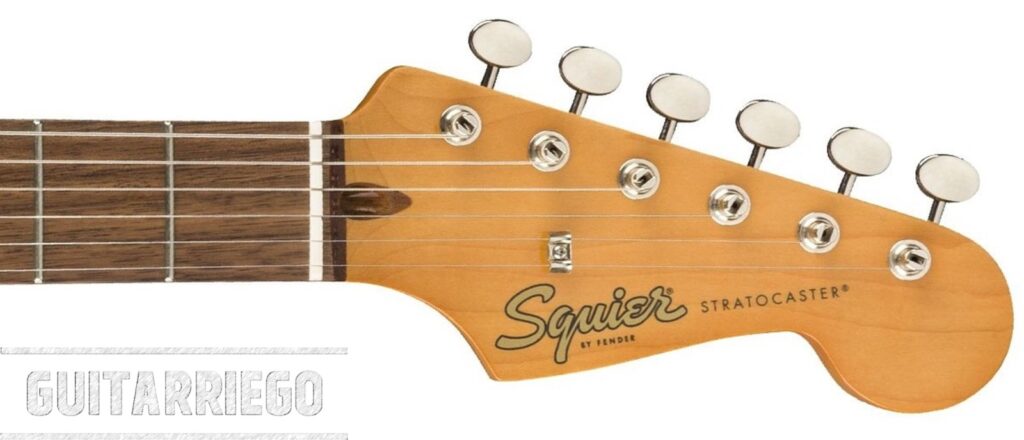
Pickups
The pickups are generally where you can hear the biggest difference between these types of guitar. Even between the high-end and low-end Fenders, their qualities change a lot.
Most of the Squier series generally use lower quality pickups with ceramic magnets. These single-coil pickups are made with ceramic bar magnets instead of Alnico pole magnets. Fender use magnets made of alnico, an alloy of Aluminum, Nickel and Cobalt, hence Al-Ni-Co. However, the Classic Vibe also come with this type of Alnico “Fender Designed” pickup, which is a huge improvement over the rest of the Squier lines.
The rest of the Squier series, such as the Bullet and Affinity, feature ceramic magnetic bar singlecoil pickups. These pickups are more similar in construction to the P90s with more output and less clarity than traditional Fender singlecoils. The humbuckers used by Squier are also built with ceramic magnets, with more emphasis on output than tonal clarity.
The pickups for the Fender Mexico are the Player Series “Alnico 5 Strat Single-Coil”, manufactured by Fender. These are better pickups than the Squier Classic Vibe and are also better than its predecessor, the Standard Mexico, which came with ceramic pickups. In any case, it must be clarified that they are inferior to those of the MIA -Made In America- models.
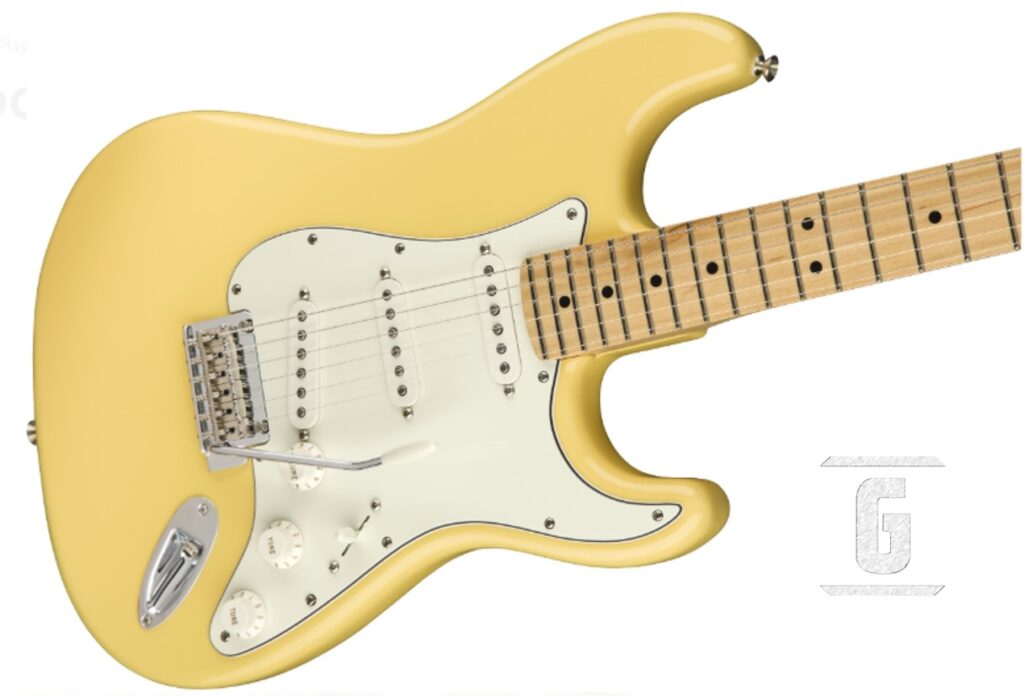
The pickups, like the components, in the Fender brand guitar are better, however, the ones that come in the Squier are of very good quality. Plus, it’s an easy change to make on either guitar.
Fit and Finish
The fit and finish of both guitars is usually very good. Squier guitars are painted in Polyurethane both on the neck and on the body. Fender Mexico guitars are finished with Polyester on the body and with Urethane on the neck. Both are very resistant lacquers and are characterized by being relatively cheap and easy to work with. However, the fit and finish of a Fender is better than that of a Squier.
Finishing of the different Squier ranges
The glossy urethane finish on most of these models tends to be quite thick, which affects the resonance and audio of the instrument. Although the finish on the lower-priced and lower-end Squier is consistently less accurate, more expensive models like the Classic Vibe, Vintage Modified, Deluxe, and Standard feature good quality. The same goes for the finish of the frets, which are not as well rounded in the cheap ranges, and the frets are less polished. On higher-end guitars, this really changes a lot.
Fender Player Series finish
The Fender Player Series from Mexico tends to have a thinner finish with fewer blemishes than Squier, especially in key areas like the neckpocket. Some even claim that in general Fender MIM guitars tend to weigh less than Squier models.

Maintenance and improvements
Any guitar has a cost to maintain, and cheaper guitars usually require higher expenses. Change of tuner machines, noisy potentiometers, selectors with false contact, etc.
Thus, the Fender Mexico series models will tend to require less maintenance costs. Fender factory hardware will last longer and may not require replacement. The same goes for electronics. The Squier’s pickup selector and potentiometers are cheap.
Thus the higher quality parts and construction of the Fender will allow the instrument to age better and allow one to be more selective about what to change and what to keep.
Regarding the pickups, although many choose to change them for better options, the reality is that you should not have problems with any of the brands.
However, it should be noted that both the Fender and the Squier are easy to maintain and relatively cheap. Instruments designed by Leo Fender are intended to be cheap and easy to build, replace, and maintain. It has interchangeable parts, not just the pickups, tuners and other components, you can even change necks and bodies.
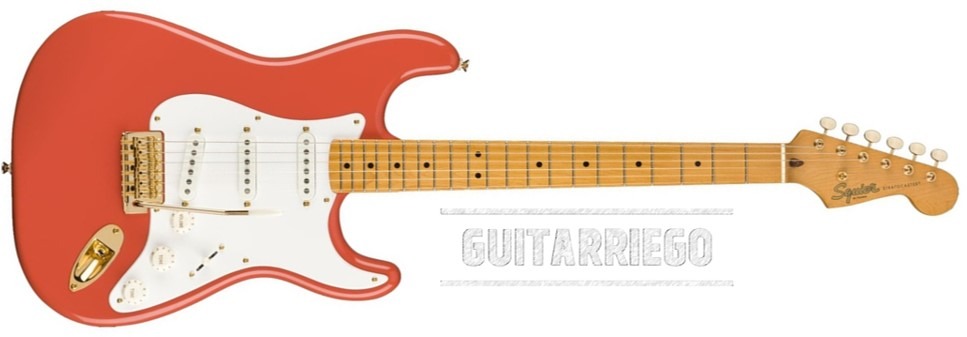
Value and price-quality ratio
The value or the price-quality ratio is something very difficult to define, and also very subjective at times. New Chinese guitars, the Classic Vibe model with an alder body and alnico pickups, have little to envy the Fender Mexico of the Player Series, at the same time that they cost 40% less.
Player Series Fender Stratocaster is still a better instrument, though, and It has the detail of having the word Fender written on its headstock, something that not only plays in our heads, but long-term resale value as well.
Squier Stratocaster Classic Vibe 60s: revised in detail
In the video below, Miike from Made by Miike, gives an interesting review of the Squier Stratocaster Classic Series 60’s, and a comparison with Fender guitars.
Fender vs Squier: Conclusions
As we can see the Squier Stratocaster Classic Vibe made in China really are great instruments that are very close to the Fender. Those that are made with an Alder body really are excellent music instruments. However, a Fender Stratocaster Player Series from Mexico is always going to be a Fender. With great value for money. But which one to choose, Fender or Squier?
If you have a very limited budget, you can go for a Squier Stratocaster CV, both new or in the used market. On the other hand, if your budget is not so limited, the Fender Stratocaster Player are the option to follow.
Fender or Squier guitars?
In the case that you are looking for non-traditional models, Squier is the option, since it has less common models: Jaguar, Jazzmaster, Mustang, Starcaster, Duo-Sonic, Bass VIs, baritone or some other vintage reissue such as the Vintage Modified series that they bring novelty versions, or the same Classic Vibe line and you don’t want to spend a fortune. This way you can access for a fraction of the value of “true”. Then if you love the model, you can go for the Fender.
On the other hand, if you are sure of what you want and you are looking for a quality instrument with good long-term performance and at a relatively cheap price, the Fender Stratocaster Mexico of the new Player Series or also of the old Standard in the guitar market used are a great option.
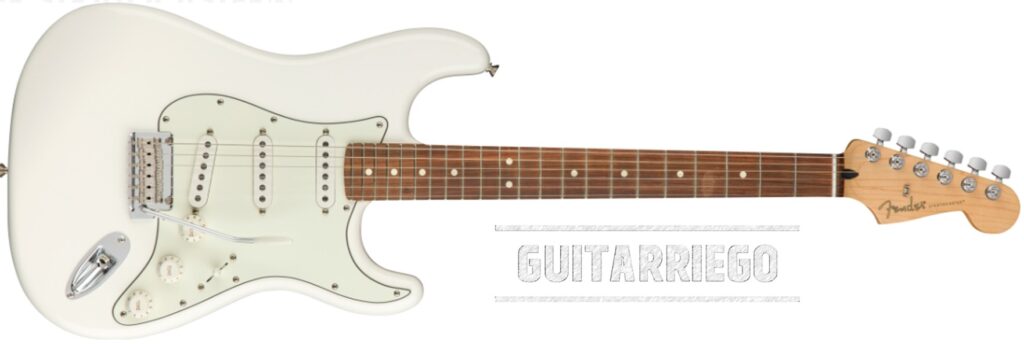
Of course, the most important thing is always that you try the instruments and choose the one you feel most comfortable with, that sounds better and make you keeping playing.
For more information on the guitar, visit Fender web site.
Related Post: Fender’s Failures: Ugly, Weird, or Misunderstood Guitars and Fender vs Gibson review: features, differences and secrets.
You can share opinions or also chat about this and more with other musicians in our comments section.






